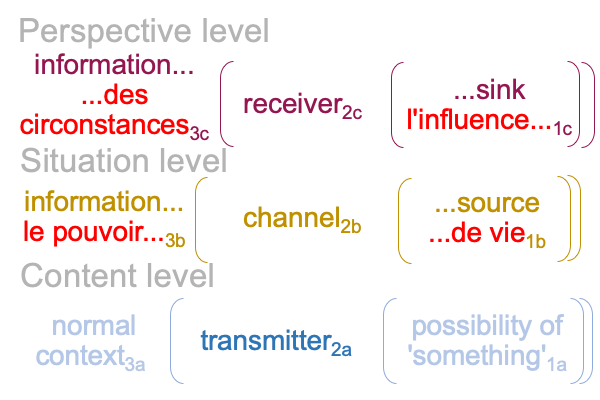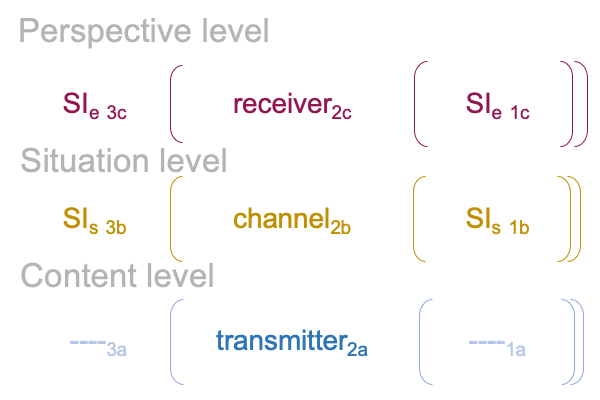0373 Recall the unexpected and twisted path from point 0270 to point 0300?
Now, maybe I should start getting used to that storyline.
0374 Why?
It’s the story of the evocation of thirdness by firstness.
0375 Initially, Sharov and Tonnessen’s noumenal overlay associates to the specifying sign relation.
Once the Deacon and Tabaczek interscope for emergence enters into the picture, the S&T noumenal overlayincorporates the exemplar sign relation.
0376 Initially, Sharov and Tonnessen’s noumenal overlay belongs to what is of the Positivist’s judgment. It belongs to firstness. Yet, it touches base with secondness, in so far as its own dyadic structure serves as a guide for discerning what should be regarded as phenomena and what is in need of being modeled.
This makes sense, in so far as biosemiotics is the study of the relational thing that all biological entities have in common.
0377 I mean really, how is a biologist going to examine a sample of the relational thing that all biological entities have in common?
Hey, who left a biosemiotic slide in the microscope?
Is it Shannon?
Let me take a look.

0378 Yeah, it’s Shannon’s alright. It has information theory written all over it.
But now, the associations are even more evocative.
0379 The two tendencies that the premoderns identified, the force of life and the influence of circumstances, now associate to normal contexts and potentials. The stuff of strife (situation-level) and love (perspective-level) associate to both thirdness and firstness. These are the things that biosemiotics is supposed to account for.
0380 Shannon’s information theory fixates on the virtual nested form in the realm of actuality.

0381 The perspective-level actuality2c of a receiver2c virtually brings the situation-level actuality2b of a channel2b into relation with the potential of a content-level information transmitter2a.
Yes, these actualities manifest phenomena that can be observed and measured. Shannon’s information theory assists in modeling those observations and measurements. But, do those models tell me about the situation- and perspective-level normal contexts and potentials? Do they tell me about the specifying and exemplar sign-interpretants?
If they do not, then is Shannon’s information theory biosemiotic?
